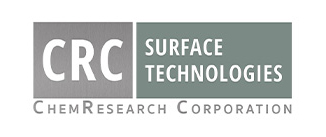
30 Dec What Is Hardcoat Anodizing?
Hardcoat anodizing is a type of electrochemical coating that is typically used on aluminum parts. Compared to other types of anodized coatings, hardcoat anodizing is much thicker and offers superior corrosion resistance. Let’s take a closer look at the hardcoat anodizing process and the benefits it has to offer.
What Is Hardcoat Anodizing?
The electrochemical process of coating a metal substrate with a protective oxide layer is called anodizing. There are three types of anodic coatings—Type III, also known as hardcoat, hard, or engineered anodizing, creates the thickest coating. The anodic layer can be made between 13 and 150 μm (0.0005″ to 0.006″) thick. The thicker the anodic layer, the better the resistance to corrosion, abrasion, and wear.
The standards for hard anodizing used by CRC Surface Technologies are given by:
- MIL-A-8625 Type III
- AMS 2469
- BS 5599
- BS EN 2536
- AMS 2468
How Does Hard Anodizing Work?
Compared to other types of anodizing, Type III anodizing requires more process control in order to achieve a thicker coating. The metal substrate is submerged in a sulfuric acid bath. The bath must be cooled down to near freezing with a refrigerated tank, and then high voltage is applied.
This process triggers the natural formation of an oxide film on the substrate’s surface. It creates a thick, hard, and uniform anodic layer that protects the metal from various types of wear and tear.
Hardcoat Anodizing Benefits
The thick coating formed by hard anodizing offers a long list of benefits, including:
- An even coating, even on parts with irregular shapes
- Improved corrosion, wear, heat, and abrasion resistance
- Better lubricant and PTFE (nonstick) coating retention
- Enhanced electrical and thermal insulation
- Prevents metal parts from galling
- Creates a sterilized surface
- Easy to keep clean
- Can be dyed
Appearance of Hard Anodizing
Hardcoat anodizing isn’t as aesthetic as Type I or Type II coatings. The color of undyed Type III coatings depends on the alloy used and the thickness of the anodic layer, but it typically ranges from bronze-gray to dark gray or black. The thicker the coat, the darker the color. However, anodized coatings can also be dyed various dark colors for part identification, with black being the most popular.
Common Applications for Hardcoat Anodizing
Because hard anodizing boasts so many beneficial properties, it is used in an expansive range of industries. The different properties of hard anodizing benefit manufacturers in many ways. Hardcoat anodizing offers:
- Enhanced corrosion and wear resistance for firearm components in the military and defense industries
- Uniform infrared energy emissivity and high dielectric (electrical insulator) for the electronics industry
- Excellent abrasion resistance for high speed machining
- Can be sterilized for medical instrumentation
- Better wear resistance, dry lubrication, and electrical insulation for aerospace parts
- Improved durability for sporting goods
Type III Hardcoat Anodizing in Phoenix, Arizona
CRC Surface Technologies offers all types of anodizing—including hard anodizing—to manufacturers in Arizona and across the country. As the largest special processing facility in our state, we’re able to provide over 33 different types of surface treatments, as well as non-destructive testing, light assembly, and more. If you need hardcoat anodizing, please contact our team at 602-253-4175 or send an email to rfq@chemresearchco.com to request a quote.
Images used under creative commons license – commercial use (12/30/2022). Photo by Samuel Penn on Unsplash

